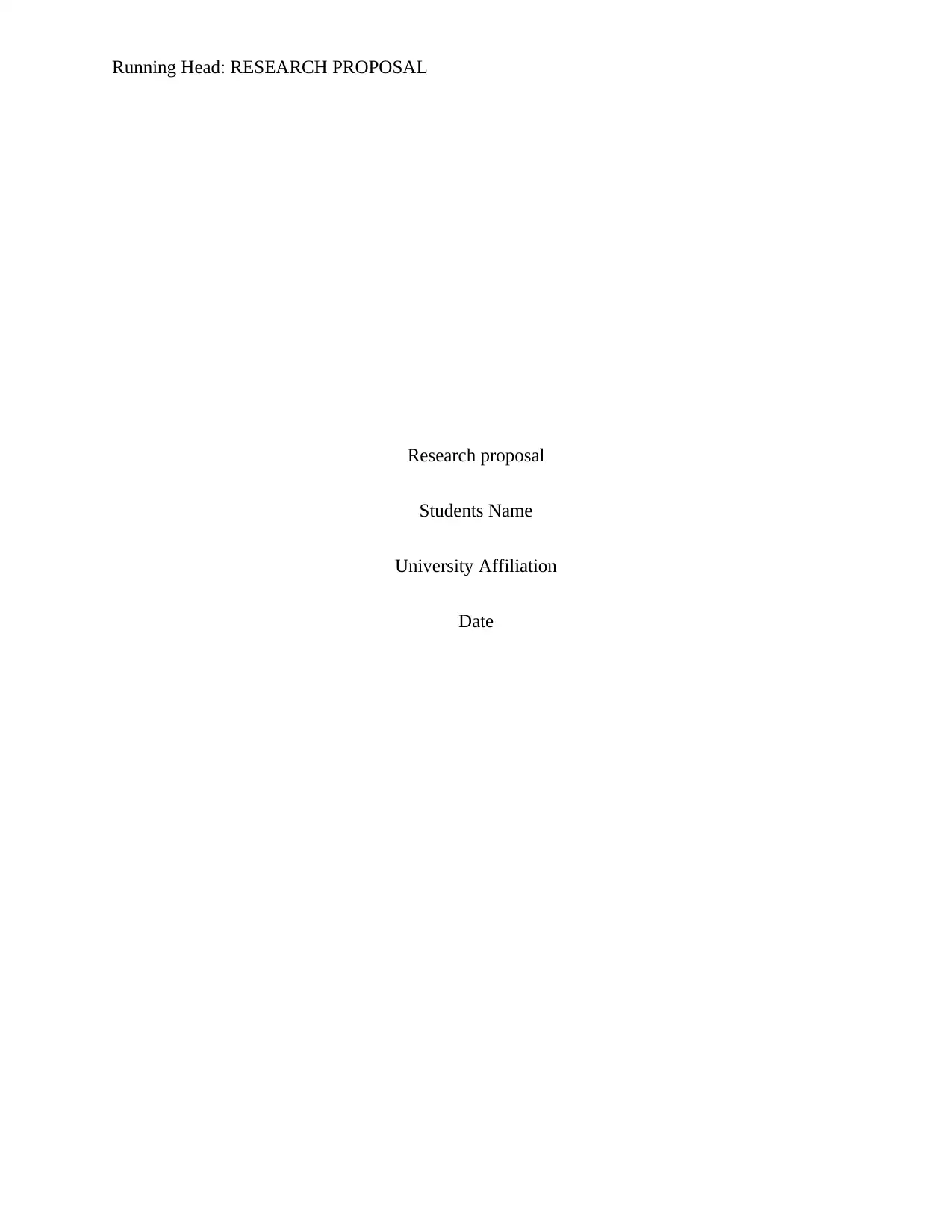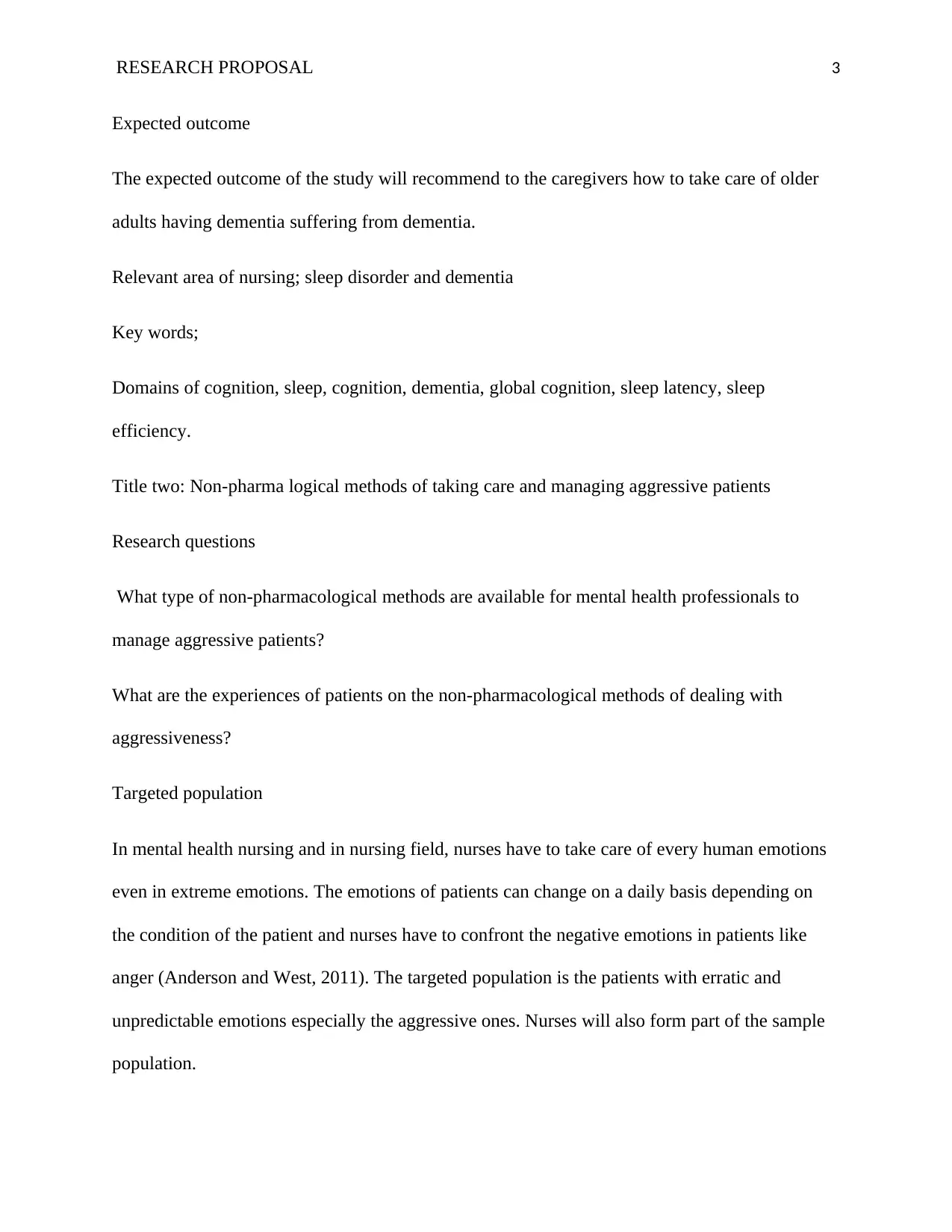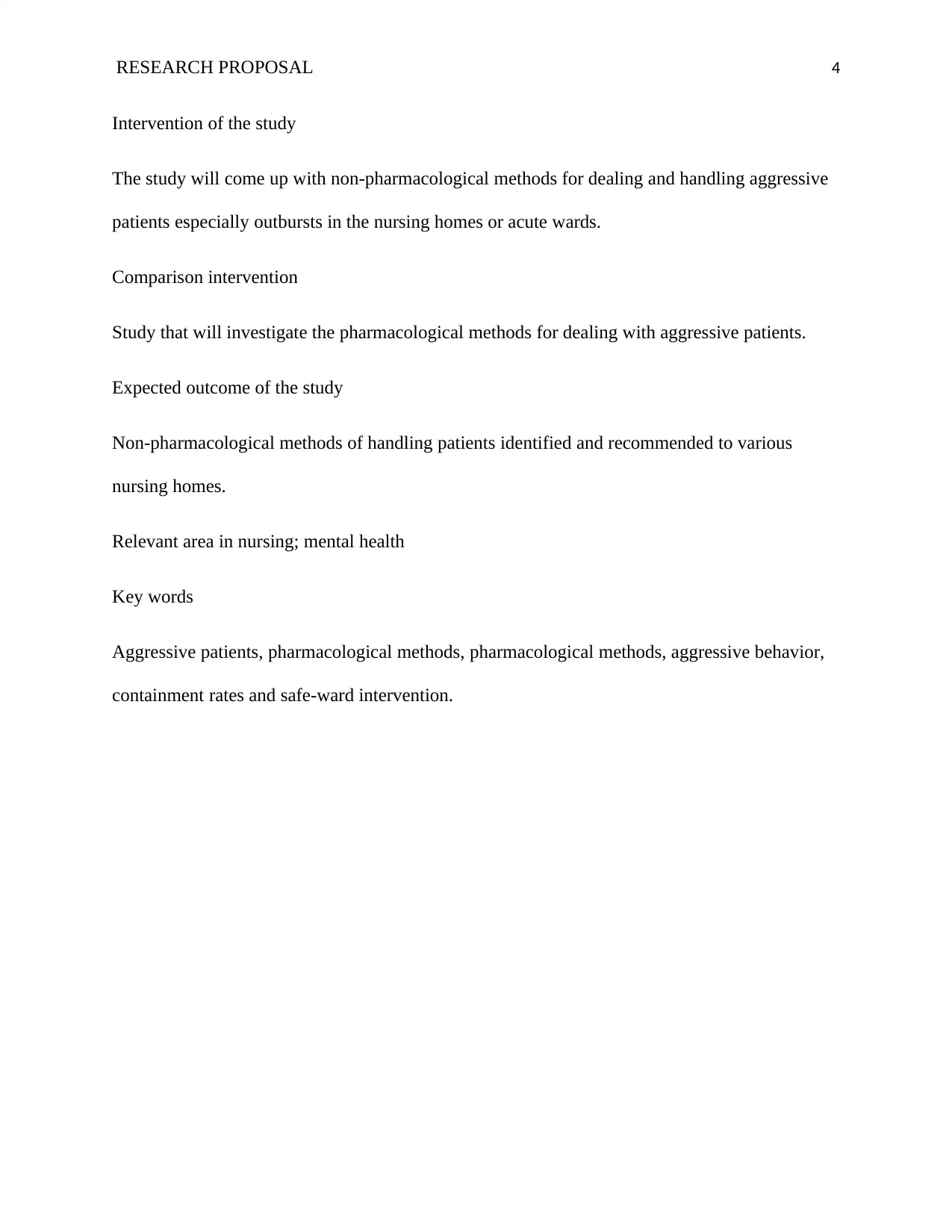Research Proposal: Impact of Sleep, Dementia, and Aggression in Adults
VerifiedAdded on 2023/04/23
|5
|619
|50
Report
AI Summary
This research proposal presents two distinct research questions within the field of nursing. The first focuses on the relationship between sleep parameters (wake after sleep onset, sleep onset latency, total sleep time) and cognitive domains (attention, episodic memory, processing memory, and global cognition) in community-dwelling adults aged 60 and older in Malta. The proposed intervention aims to develop clinical care solutions for older adults with dementia, addressing sleep and cognitive issues. The second research question investigates non-pharmacological methods for managing aggressive patients in mental health settings, targeting patients with erratic emotions and nurses. The study seeks to identify and recommend effective non-pharmacological strategies for handling aggressive behavior, especially in nursing homes and acute wards, comparing these methods to pharmacological approaches. Both proposals outline the targeted populations, interventions, expected outcomes, relevant areas of nursing, and key search terms.
1 out of 5












![[object Object]](/_next/static/media/star-bottom.7253800d.svg)